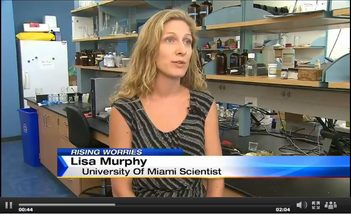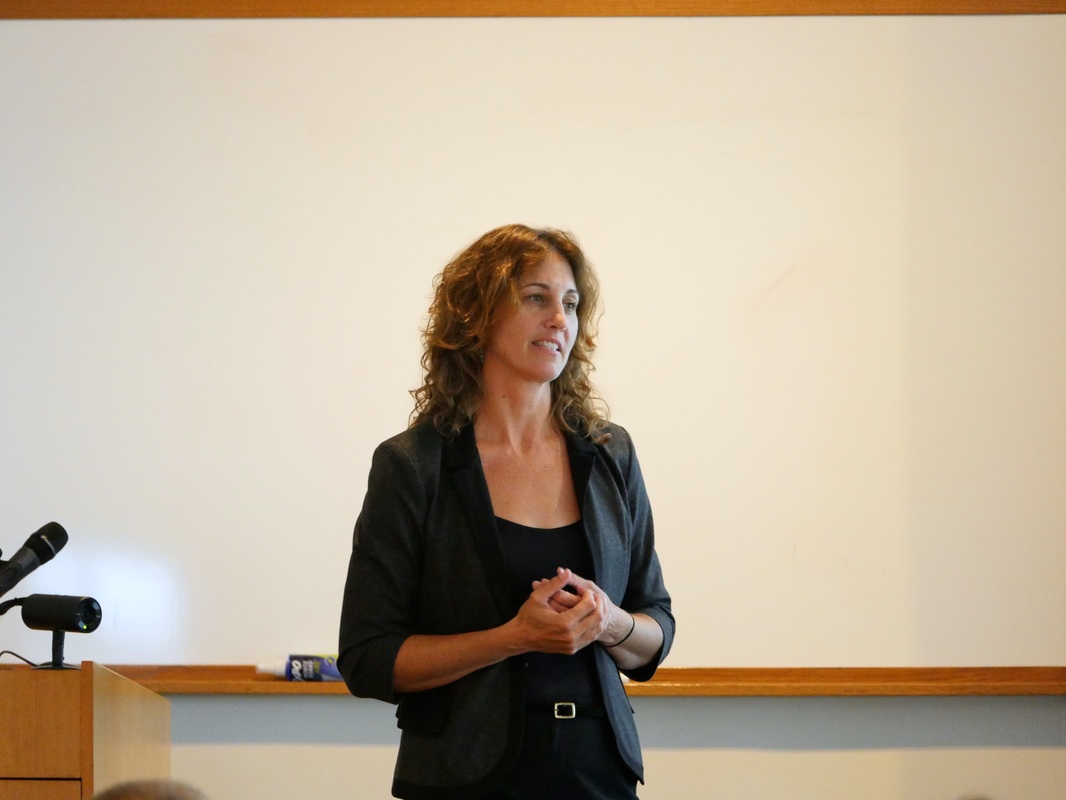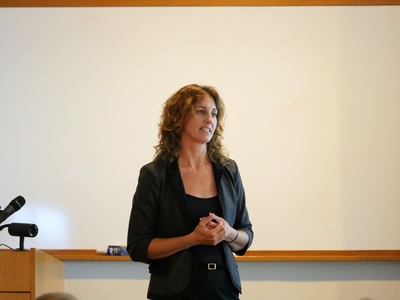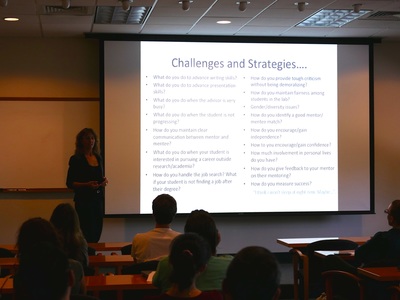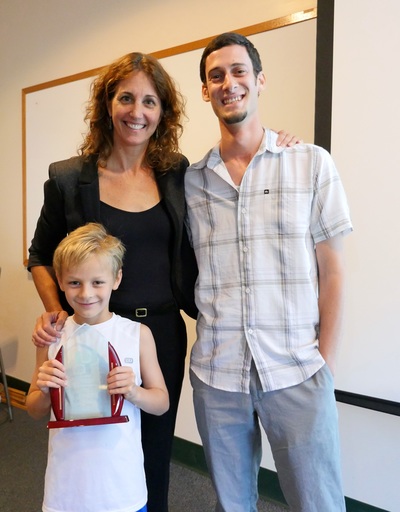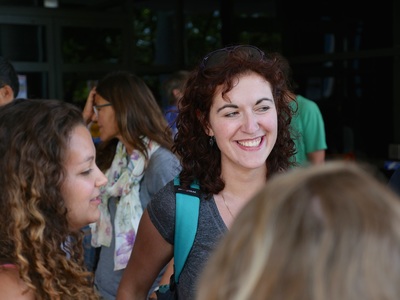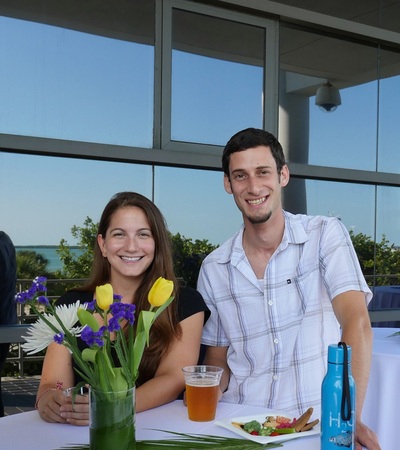
Review of 'Sea Level Rise in Florida: Science, Impacts, and Options'
Hine, Chambers, Clayton, Hafen, and Mitchum
University Press of FloridaReviewed by Amy ClementIt’s a bright day with not a cloud in sight, yet people in Miami Beach are wading across streets through knee-deep water: seawater, that is. This scene has become increasingly commonplace in the lowest lying parts of South Florida, often referred to as sunny day or nuisance flooding. You don’t need to be a scientist to know that something is wrong with this picture. But if you want to look at the problem through the lens of a scientist, the picture comes into awesome relief. That is what ‘Sea Level Rise in Florida: Science, Impacts, and Options’ offers it’s readers. The authors are experts in wide ranging fields, and take readers on a tour of South Florida that begins millions of years ago when Florida was the bottom of a vast ocean that covered what is now most of the continental United States. This aspect of natural history is not just a geological wonder; it is critical to understanding the problem we Floridians face today. We have built a dense urban area and a vast agriculture industry on this porous, limestone rock that barely ekes its way above sea level, vulnerable to the encroaching water from all sides, and from beneath our feet. A chapter on the ecosystem impacts of sea level rise provides lessons about the unique ecology of Florida, which alone is worth the read. Perhaps the most poignant pictures in this well-illustrated book are the elevation maps of the state, highlighting how the southern part of the state is within several feet of sea level, with these low lying areas overlapping the past, present, and projected future development areas. The book’s fourth and final chapter gives some ideas for solutions, though there is clearly no ‘silver bullet.’ It is important for citizens of our state to be aware of efforts to both reduce the greenhouse gas emissions that are at the root cause of the problem and to engineer solutions that may allow us to adapt to the inevitable impacts. This book is an efficient way for Floridians to quickly come up to speed on the basics of a grand, global problem that has very local implications for current residents of our State and for future generations.
A cautionary note on the use of surface heat fluxes to diagnose the causes of the Atlantic Multidecadal Oscillation
June 2016Clement and co-authors refute Zhang et al.'s (2016) technical comment on Clement et al. (2015). In their comment, Zhang et al. (2016) interpret the mixed-layer energy budget in models as showing that “ocean dynamics play a central role in the AMO." We show that the surface heat budget cannot be used to determine the causes of the Atlantic Multidecadal Oscillation (AMO). The reason is that on sufficiently long timescales, the heat storage of the mixed layer goes to zero, and hence the net surface heat flux reflects a balanced state (in other words, it’s the same as the climatological mean). Further, Clement et al. (2016) showed that the diagnostic used by Zhang et al. (2016) can be explained with minimal ocean influence. Hence, we reaffirm our findings that the AMO in models can be understood primarily as the upper-ocean thermal response to stochastic atmospheric forcing.
>> The response to the comment may be found
here.
Outreach at George Washington Carver Middle School in Coconut GroveFall 2015 and Spring 2016
Eleanor is a participant of the National Center for Science Education outreach program "Scientists in the Classroom", currently in its pilot stage. This program connects a grade school teacher to a nearby scientist in the community. Eleanor was connected to Bertha Vazquez, a middle school science teacher at George Washington Carver Middle School in Coconut Grove, FL. As a part of this program, Eleanor creates lesson plans for each class, teaches two days per semester, and serves as a reference for any climate-related questions that teachers or students may have.
New paper in Science questions the role of the ocean in producing the Atlantic Multidecadal OscillationOctober 2015Press release and an interview with Dr. Amy Clement found at
this website. The article itself, including the supplemental material, can be found under "Publications" tab at the top of this page.
|
|
Dr. Lisa Murphy interviewed about sea level rise on local newsJuly 23, 2015Lisa was interviewed by local news group Local 10 for her expert opinion as a climate scientist on sea level rise. Sea level rise is an imminent threat to Miami due to the city's location on the southeastern coast of Florida. Local 10 commented on recent work by climate scientists Dr. James Hansen et al. on global sea level rise and requested a response from Lisa. See the whole clip here.
|
|
|
Dr. Amy Clement wins 2015 RSMAS Outstanding Faculty Mentor Award
Spring 2015
Based on nominations by students and an evaluation by a committee of students, Amy was selected as the winner of the 2015 Outstanding Faculty Mentor Award. This is awarded to mentors who are considered to go above and beyond to ensure the success of their students. As a recipient of the award, she gave a one-hour lecture on her perspective on mentoring.
Pictures from the lecture and the following banquet are on the left.
|
Dr. Amy Clement Named Fellow of American Meteorological SocietyOctober 3, 2014Amy was elected a fellow of the American Meteorological Society for her outstanding career in climate research. Congratulations, Amy!
Check Out Our Work on Publiscize!Summer 2014Katinka's Scinopsis:
Observations of cloud cover from ships help reduce the uncertainties in climate changeHonghai's Scinopsis
:
South Pacific weather is found to affect El NinoLisa's Scinopsis:
Including the dust cycle increases climate model accuracyOutreach at the Patricia and Phillip Frost Museum of ScienceFall 2013 and Spring 2014Kim and Katinka are participants in the
Science Communication Fellows Program at the Frost Museum of Science in Miami, FL. The program is sponsored by the National Science Foundation and Institute of Museum and Library Services, and it teaches scientists how to effectively communicate their research to the public. Participants learn how to adapt advanced scientific ideas to an informal education setting that emphasizes the basic concepts and important findings. They create a hands-on demo that highlights their research and interact with the public at museum events!
>> Watch Katinka make clouds in a jar! [video]AGU Position Statement on Climate ChangeAugust 5, 2013In 2013, Amy participated in a 14-person panel and that revised the AGU position statement on climate change. This position statement is renewed or updated every four years to keep up with the scientific understanding and effects of the changing climate, and it serves to help the public and policy makers understand the current state of the climate. You can read the position statement here. 



